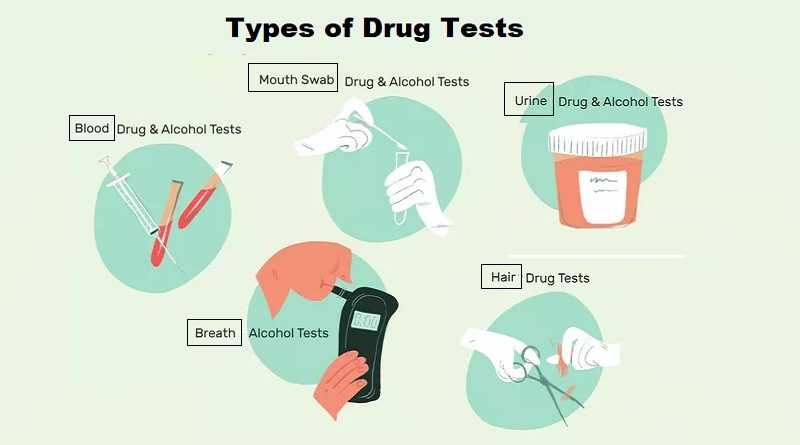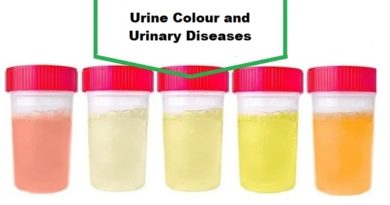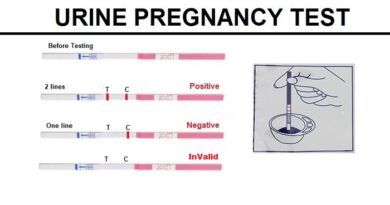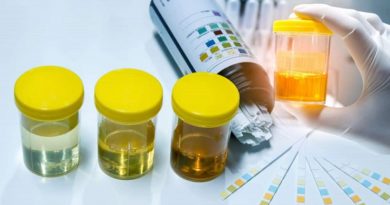Drug Test, types and indications
Last Updated on 12/01/2025 by Helal Medical
Persons taking drugs, traces taken will be excreted in body fluids, which a drug test will detect. It is a laboratory medical procedure that looks for drug signs in a sample of urine, blood, saliva, hair, or sweat.
The purpose of that test is to detect illegal misuse. The purpose of drug testing includes the following:
- Detection of illegal drug use, such as cocaine or pleasure drugs
- Akso may be performed to detect Misuse of prescription medicines. That means you are using the prescription medicines in a different way of the reason being prescribed. Such drugs include pain reliever.
Purposes of drug test
It is requested for:
1- As part of a pre-employment check-up. It may be requested alone or with other lab tests.
2- Pre-enrolling in sports. Athletes are usually tested for drugs, as steroids that help build muscle. These drugs are used to improve performance or build muscles.
3- Random check up
4- Follow up for the status of a drug uses (drug treatment)
5- For legal purposes, as Legal evidence.
What drugs can be detected?
Many drugs (and prescription ones) can be detected using drug tests, which are usually done on urine samples. Drug tests can detect the following:
- Cocaine
- Amphetamines
- Heroin
- Morphine
- Phencyclidine (PCP) (also known as angel dust)
- Alcohol
- Benzodiazepines
- Hydromorphone
- Tetrahydrocannabinol (THC) (the active ingredient in marijuana)
- Propoxyphene
- Methadone
- Codeine
- Barbiturates
- Antidepressants
Sample required for testing
Usually, drug testing is performed using a urine sample, that must be collected in a clean container inside the laboratory premises under observation by the staff, (as per government regulations). You cannot collect at home, or if you don’t have a valid ID.
How long a drug can be found in urine? Signs of drugs can be found in urine, if the person had used them during the last 7-15 days (or more) before the test day. How long a drug lasts in your body depends on many factors:
- The type of drug
- How much a person used
- How long you were using it before the test
- How body reacts to the drug
Do you need to prepare?
No! No special preparations are required. Fasting is not required. Drug testing is often performed on a random basis, at any time of the day.
How accurate are drug tests?
A question that is commonly asked “How accurate are drug tests?” Drug testing is very accurate when are done properly.
Urine for drug testing
Urine drug testing is the most common drug screening. Urine sample collection is painless, easy, quick, and cost-effective. Signs of drug use can remain in a person’s urine long time. Urine test can determine whether a person used specific drugs days or weeks before testing.
The drugs most often tested in urine sample include amphetamines, barbiturates, benzodiazepines, cocaine, cannabis, methamphetamine, opioids, phencyclidine (PCP).
To detect alcohol, Urine is not used but breath or blood tests are commonly used.
Drug Test Panel
Usually, the test is done to detect a group of drugs called the Panel. The panel can include 4, 7, or up to 14 drugs. A 14-panel test screens for thirteen of the most frequently abused prescription drugs (like Xanax, Fentanyl, Ritalin, Valium) and illegal drugs (Like Cocaine, PCP, cannabinoids, quaaludes). A urine test is the most common used.
| 5-panel drug test | A 5-panel drug test for employee screening looks for MMJ, opiates, phencyclidine (PCP), cocaine, and amphetamines. It is the most commonly requested drug panel. |
| 6-panel drug test | A 6-panel drug test looks for MMJ, opiates, cocaine, amphetamines, methamphetamines, and benzodiazepines. |
| 7-panel drug test | A 7-panel drug test looks for the presence of MMJ, opiates, phencyclidine (PCP), cocaine, amphetamines, barbiturates, and benzodiazepines. |
| 8-panel drug test | An 8-panel drug test tests for MMJ, opiates, phencyclidine (PCP), cocaine, amphetamines, methamphetamine, barbiturates, and benzodiazepines. |
| 9-panel drug test | A 9-panel drug test tests for the presence of MMJ, opiates, phencyclidine (PCP), cocaine, amphetamines, methamphetamine, barbiturates, benzodiazepines, and methadone. |
| 10-panel drug test | A 10-panel drug test typically tests for the presence of MMJ, opiates, phencyclidine (PCP), cocaine, amphetamines, barbiturates, benzodiazepine, methadone, methaqualone, and propoxyphene. |
| 12-panel drug test | A 12-panel drug test is administered to test for MMJ, opiates, phencyclidine (PCP), cocaine, amphetamines, barbiturates, benzodiazepine, methadone, methaqualone, propoxyphene, Ecstasy/MDA, and oxycodone. |
| 13-panel drug test | A 13-panel drug test is performed to detect the presence of 13 highly abused prescription and illegal drugs. It screens for MMJ/ tetrahydrocannabinol (THC), opiates, phencyclidine (PCP), cocaine, amphetamines, barbiturates, benzodiazepine, methadone, methaqualone, propoxyphene, buprenorphine, oxycodone, and tricyclic antidepressants (TCA) |
| 14-Panel Urine Drug | The 14-Panel Urine Drug Test tests for everything a 12 panel drug tests for plus Tramadol and Demerol. |
Summary:
The testt is used to check for illegal use by employees, to evaluate possible accidental or intentional overdose or poisonings, to monitor compliance with the rehabilitation program, and to determine the presence of drugs for legal purposes. It can detect illegal drugs, or any of the prescription drugs.
SOURCES:
- https://medlineplus.gov/lab-tests/drug-testing/
- https://www.healthyplace.com/addictions/articles/what-is-drug-testing
- https://www.medicalnewstoday.com/articles/323378
- Urine Sample Collection, Types, Uses and more | Lab Tests Guide
Do you have a question? please drop it down in the comments, or
Click here for (FREE ONLINE CONSULTATION)
💬 Looking for drug test near in Manila, Philippines:
You can easily reach Helal Medical via WhatsApp (+63 966 974 1609), Facebook Messenger, or by clicking the chat icon at the lower right corner of our website HelalMedical.com.
Discover more from Helal Medical Manila
Subscribe to get the latest posts sent to your email.




